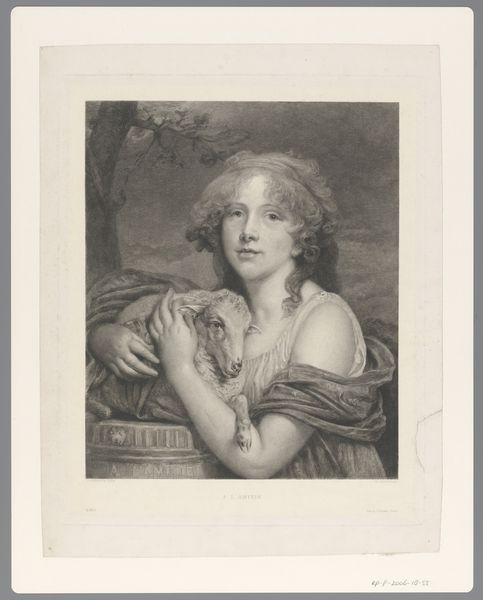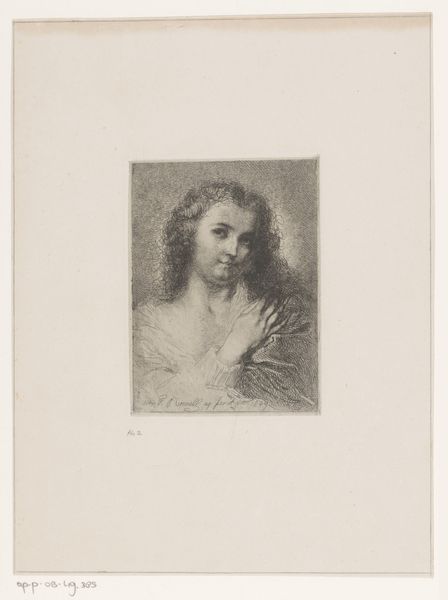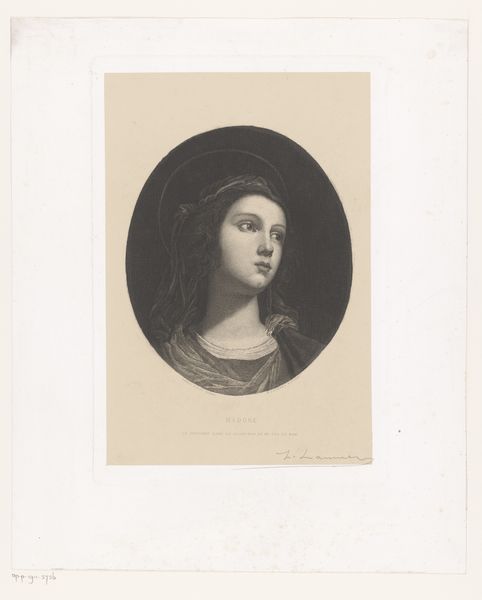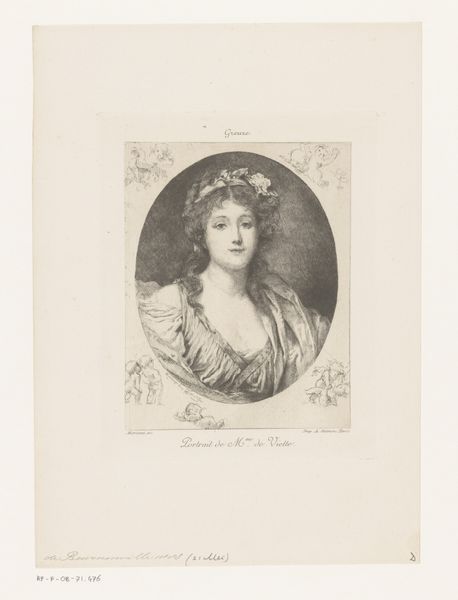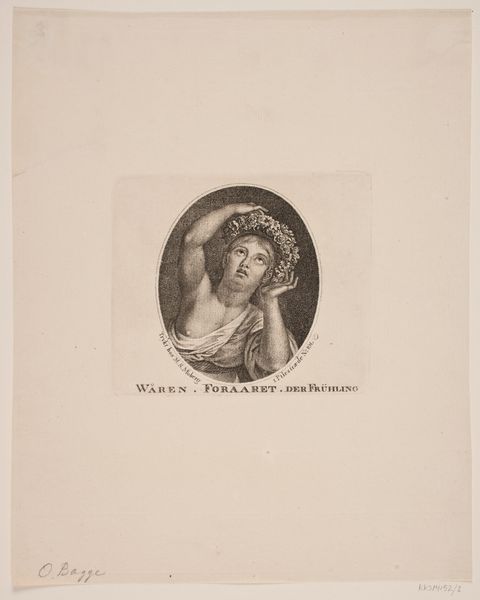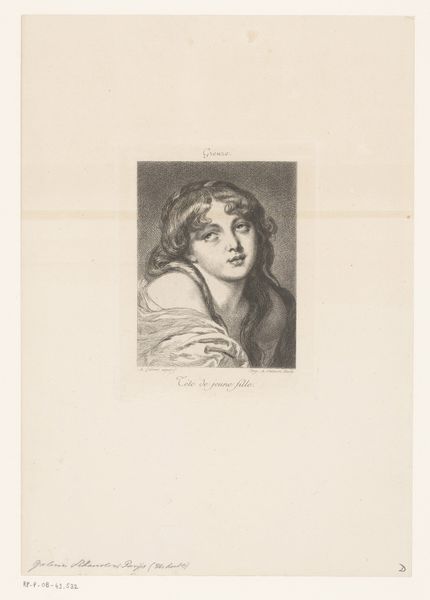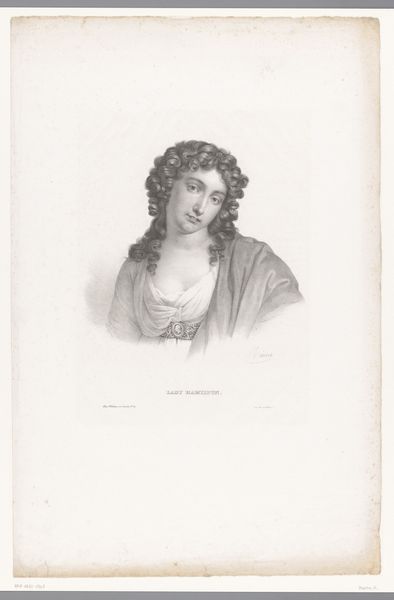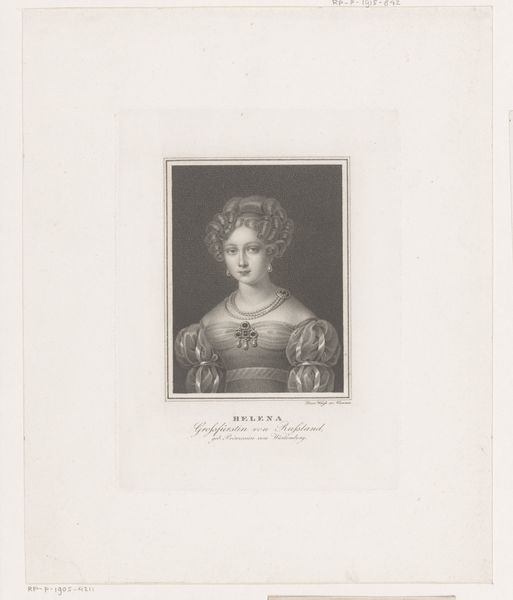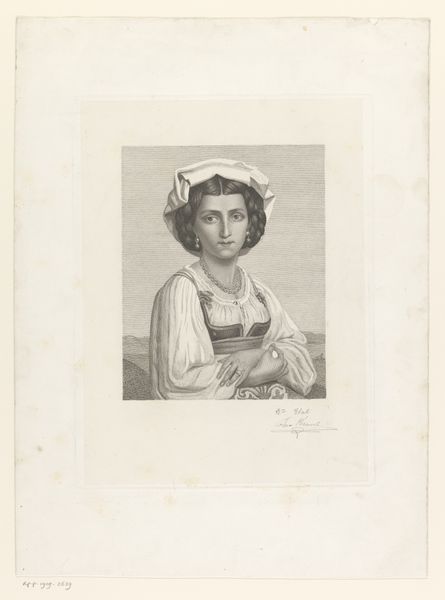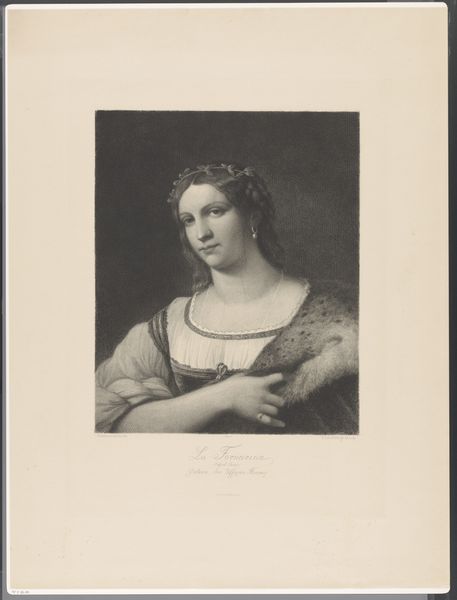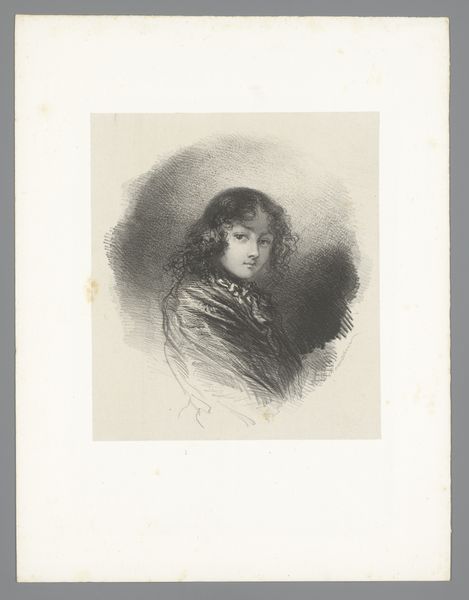
drawing, etching, paper, pencil
#
portrait
#
pencil drawn
#
drawing
#
light pencil work
#
etching
#
pencil sketch
#
paper
#
child
#
pencil drawing
#
pencil
#
realism
Dimensions: height 190 mm, width 140 mm
Copyright: Rijks Museum: Open Domain
Editor: So, this is Louis Monziès' "Biddend Meisje," or "Praying Girl," from 1881, made with pencil and etching on paper. It's such a simple portrait, but something about the girl's expression feels very charged. What do you see in this piece? Curator: It's easy to see this as just a sentimental depiction of childhood piety, but I think we need to question that immediate reading. What power dynamics are at play when an adult artist captures a child in a posture of prayer? Who is she praying to, and what societal structures are shaping her perceived need for divine intervention? Editor: I hadn't thought of it that way. It’s unsettling now that you mention it. Almost like the artist is reinforcing a particular image of childhood innocence and submission. Curator: Exactly. Consider also the historical context. 1881 was a time of immense social and political upheaval, particularly regarding women’s roles. Could this image be a subtle commentary, or even a critique, on the expectations placed upon young women to be docile and devout? Do you see anything in her gaze that contradicts the traditional "innocent" portrayal? Editor: Well, now that you point it out, there is a certain intensity there. She looks almost… resigned? Less like she's connecting with a higher power, and more like she's performing a role. Curator: Precisely. By analyzing this work through the lens of gender and power, we can begin to unpack the complex social narratives embedded within a seemingly straightforward portrait. Editor: This has really shifted my understanding. I came in thinking it was just a sweet drawing, but now I see the layers of meaning, especially considering the historical expectations around young women at that time. Curator: And that’s the beauty of art history, isn’t it? To continually re-evaluate what we think we know and challenge the dominant narratives.
Comments
No comments
Be the first to comment and join the conversation on the ultimate creative platform.
